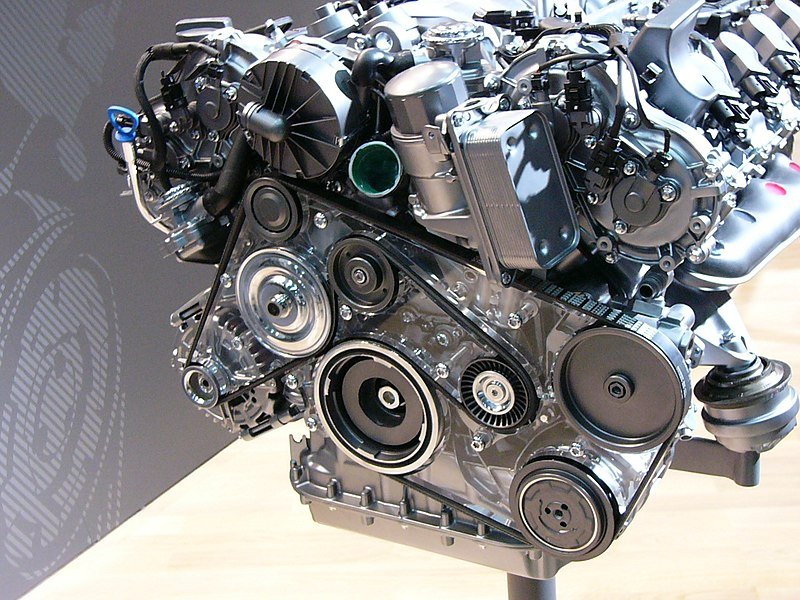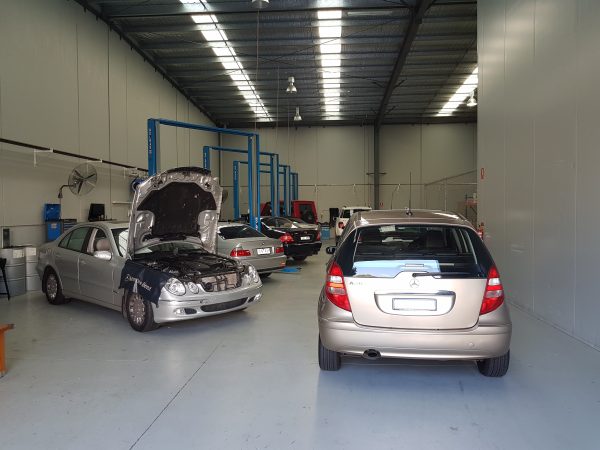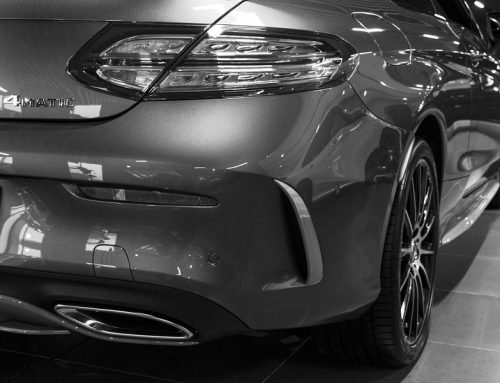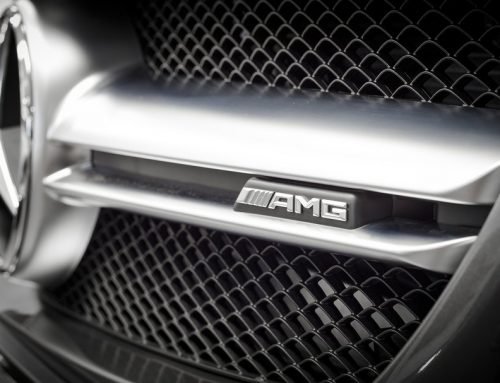You’re out on the road, driving to (or from) work, doing a grocery run or simply enjoying your Mercedes-Benz when suddenly the dashboard lights up with a warning light.
Luckily, you’ve studied the manual, so know that you’re dealing with an issue with your intake manifold. You also know that your intake manifold is important, as it’s what supplies air to the cylinders in your engine.
Unfortunately, that’s about as far as your knowledge goes!
If you’ve just gotten one of these intake manifold codes, you probably have questions. What’s the exact issue? Do you need to book a Mercedes-Benz service in Melbourne, or will the issue resolve itself? And how much will it cost to fix?
Luckily, we’ve got the answers – read on to find out!
Why variable-length manifolds, anyway?
First developed in the mid-late 1990s, variable-length intake manifolds have been the standard on naturally-aspirated petrol engines. While there are many things that separate Mercedes-Benz engines from others, in this regard they’re no different.
Each Mercedes-Benz engine features 2 different intake paths known as runners that supply air directly to the cylinders in your engine. These paths are different lengths, with the longer intake runner used for low-end torque, while the shorter intake runner allows your engine to generate more top-end power.
A long runner will help at low RPMs because it will hit the velocity limit earlier – however, it will hurt top end horsepower because it’s too restrictive. Conversely, a short runner will help top-end power because it will take longer to reach maximum velocity, but it will not help low-end torque.
With an intake manifold that can do both however, there’s no need to choose.
Variable-length intake manifolds allow the ECU to switch back and forth between long and short runners depending on driving conditions, allowing your engine to supply the appropriate amount of torque.
It’s a pretty dense subject, and as with all things mechanical, it’s a lot more complicated than we’re making it out to be.
Our Mercedes-Benz mechanics in Melbourne would love to spend more time talking about the nitty-gritty details – unfortunately, we need to move on to the rest of today’s topic.
Okay, so what’s the issue?
As with anything else mechanical, variable-length manifolds aren’t immune from failure.
And if the system at the heart of your variable-length manifolds fails, your engine won’t be able to switch between the appropriate runners. As a result, you might find your engine struggling to provide the appropriate amount of power.
These vehicles with this issue tend to report very similar problems across the board such as:
- Poor idle
- Loss of power
- Most damning of all, intake manifold fault codes
And Mercedes-Benz vehicles are no exception – if your vehicle logs an intake manifold code, it may be time to book an appointment with a Mercedes-Benz mechanic in Melbourne.
Intake manifold flap problems are a common M272 issue
Mercedes-Benz engines are some of the best in the business, with many going on to classic status.
Out of the most recent crop of Mercedes-Benz engines, the M272 and M273 are strong contenders.
Produced for much of the 2000’s, the M272 and M273 engines are one of Mercedes-Benz’ most popular engines of the last couple of years. Vehicles powered by this engine are a common sight at our workshop, with countless coming in for Mercedes-Benz service.
These include models such as:
- 2004–2011 SLK350
- 2006–2017 R350
- 2005–2013 E280
- 2005–2011 C250
- 2005–2009 E230
- Just to name a few!
While the M272 has since been superseded, its long production run and versatility means that it can still be found in many of the Mercedes-Benz vehicles still roaming Melbourne’s roads.
It’s a superb engine, known for its great performance and power. However, it has one persistent issue that many Mercedes-Benz owners in Melbourne have consistently experienced…
The root of the problem? A single piece of plastic
At the heart of your intake manifold are your intake manifold runner flaps. These are simple pieces that play a crucial role in your engine, responsible for changing between short and long runners in your intake manifold.
In the M272 and M273 engines, these runner flaps are controlled by a plastic control lever.
And that’s where we run into problems.
In our experience, the plastic lever that operates the opening and closing of the variable length intake manifold can break prematurely. Our Mercedes-Benz mechanics in Melbourne have worked on many of these engines where the manifold runner flaps have failed.
As a simple part made of plastic, these flaps are prone to wear-and-tear or breakage thanks to the heat and power that M272 and M273 engines can generate. Without the flaps, your variable-length manifold doesn’t work, causing unexpected and deficient performance depending on the orientation of the broken flap.
While this failure is the most common, it isn’t the only one – there are other failures that can cause the same fault codes. These include:
- Controlling actuator failure
- A wiring issue,
- Intake manifold wear (the pivots on the runner flaps may have completely worn out causing the flaps to jam or an air leak)
Why you shouldn’t go to the dealership for this type of Mercedes-Benz service
We’re going to let you in on a bit of a secret: did you know that Mercedes doesn’t have this particular part listed?
Instead they sell the whole intake manifold as one single unit – and an expensive one at that. The cost of the new intake manifold, as well as installation, can easily set you back a couple of grand.
That’s an awful lot of money to spend when it might be possible to replace a single plastic part!
If you check the Mercedes-Benz catalogue, you’ll notice that Mercedes doesn’t even offer replacements – if you want to replace the lever (and just the lever), you’ll need to look at aftermarket parts suppliers. Luckily, our Mercedes-Benz mechanics in Melbourne have done that part for you, seeking out trustworthy, reputable aftermarket suppliers.
Our Mercedes-Benz mechanics in Melbourne offer a repair on this, replacing the broken plastic part with a more durable metal one that’ll last longer to boot – something the dealerships don’t offer.
However, some of the manifolds can be so worn out now it simply isn’t worth repairing them – instead, you’re better off replacing the manifold altogether.
This is a pretty major job – luckily for you, our Mercedes-Benz specialists do their best to reduce costs without compromising the quality of our service.
Bringing down your Mercedes-Benz service cost
Offering better value Mercedes-Benz service in Melbourne
Your intake manifold is an important part of your engine – you’ll want to ensure that it gets the best possible treatment.
Of course, that doesn’t mean paying an arm and a leg for it!
Ammstar was founded with a single goal: to offer better value when it comes to Mercedes-Benz service in Melbourne. We aimed to simultaneously:
- Offer better prices than dealership mechanics
- Provide a more in-depth service than generalist mechanics
And that means we’re able to take a job that would normally be worth a couple grand into one that costs a lot less.
Our Mercedes-Benz mechanics in Melbourne don’t just work on vehicles with the three-pointed star, either – our Fairfield workshop is also equipped to work on vehicles from BMW, Audi and Volkswagen too.
The search for a better value Mercedes-Benz service in Melbourne begins – and ends – with a phone call to Ammstar. Give us a ring today:
- Fairfield: (03) 9499 9585
- Moorabbin: (03) 9555 5580
Alternatively, click here to book online.




